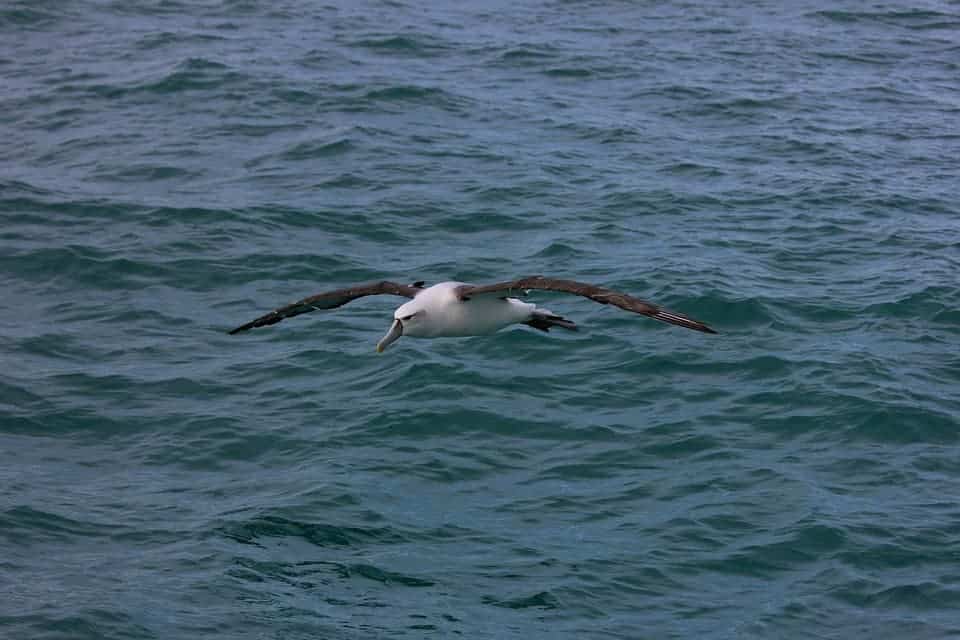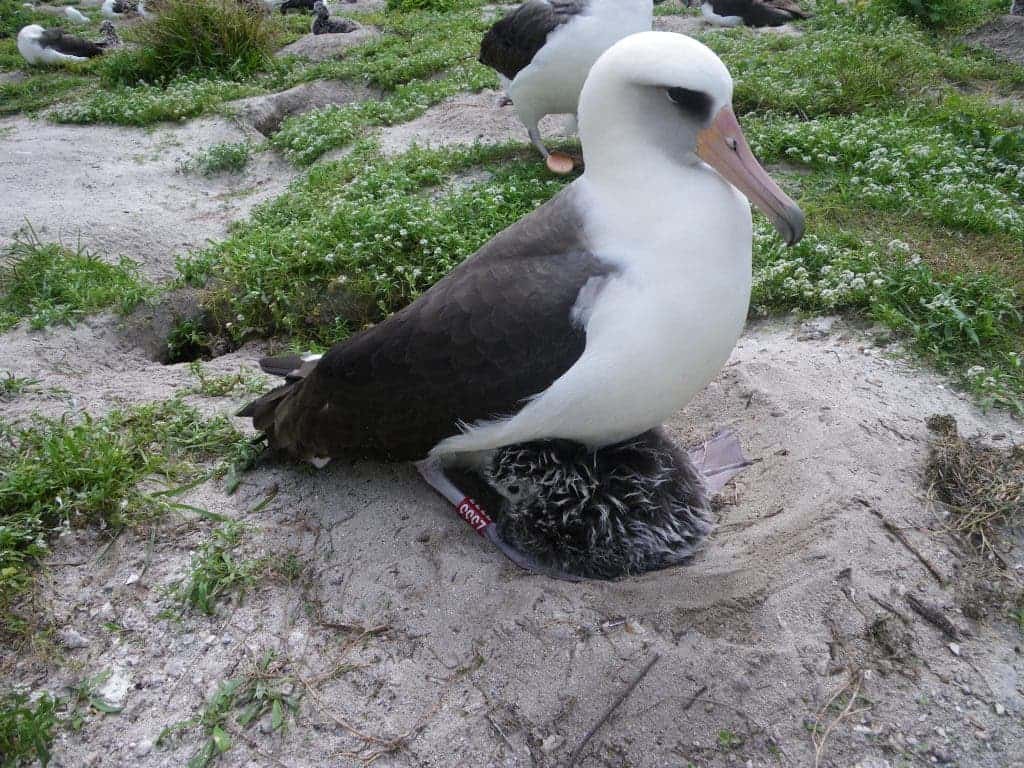The majestic albatross (Diomedeidae) is one of the most efficient flyers in the animal kingdom. The bird can effortlessly travel up to 500 miles in a single day just by occasionally flapping its formidable wings. We’ve known for some time that this optimal flight pattern is based on catching and riding wind currents. Now, engineers at MIT have found the exact flight pattern that the albatross takes in order to harvest the most energy. The findings could improve the design of gliders and wind-propelled drones but also help conservationists determine how albatross flight patterns might change as wind patterns themselves shift in response to climate change.

Spread those wings
English physicist Lord Rayleigh was among the first to study albatross flight. Using mathematics, he predicted that albatrosses fly in a series of arcing, 180-degree half-circles as the bird soars through alternating layers of high and low wind. This flight pattern, known as dynamic soaring, enables the feathered giants to stay aloft for hours at a time above the ocean’s surface with minimal wing flapping.
Today, dynamic soaring is fairly well understood with many daredevils piloting gliders that heavily exploit differences in velocity of two adjacent air masses. If the terrain and weather are suitable, these gliders can easily reach breakneck speeds. The planes can fly at hundreds of mph in loops for an extended period of time and need no engine to do so, as incredulous as it may sound. For instance, the current record was set in 2017 by Spencer Lisenby, who flew his new Kinetic Transonic 130 glider to 519 mph. You can see Lisenby fly his glider in the video below. Blink and you’ll miss him!
Inspired by dynamic soaring contests, engineers at MIT’s Department of Mechanical Engineering wanted to more closely investigate what makes these gliders so amazing. They found the perfect model in the albatross.
“The wandering albatross lives in the Southern Ocean, which is not very well-known. It’s very hard to get there, and there is a lot of wind and waves,” said Gabriel Bousquet, a graduate student in MIT’s Department of Mechanical Engineering, in a press release. “The region is extremely important for understanding the dynamics of climate change. With robots that can use the wind, you could monitor in real-time and get much denser data than we can now. This is an important step forward to actually write algorithms for robots to be able to use the wind.”
The team started with a 3-D model of the albatross and the wind field where complicated equations of motion describe the interactions within and between multiple layers of the atmosphere. In order to solve such complicated equations, the researchers had to employ a method called numerical optimization, whereby they varied the thickness of the shear layer and sought to find the minimum wind velocity required to sustain flight. The shear layer is that gap between a layer of slow wind and a layer of fast wind.
“The question we looked at was, since the wind is fast high above the water, and slow near the surface, how can we take advantage of these inhomogeneities and exploit wind energy in order to fly in an efficient way?” Bousquet says.
Since the albatross always seems to fly 5 to 20 meters above the water’s surface, the model was vastly simplified. This way, MIT found that as the shear layer thins, the bird can fly more efficiently if it dives and soars between wind layers in shallow arcs. Rayleigh’s half-circle supposed flight pattern for the albatross is thus wrong.
“One way to look at it is that, at each crossing between the slow and fast layers, some airspeed is gained,” Bousquet explains. “The most airspeed in a single crossing is gained if crossing directly up- or downwind—that’s what happens with half-turns. However, there is also an airspeed loss due to drag while turning. So it turns out that the important metric is the ratio between gains and losses. So it is more efficient to gain a little, often, as is the case with small turns, rather than a lot, but rarely, such as with half turns.”
” Essentially, the albatross is a flying sailboat, sequentially acting as sail and keel, and is most efficient when remaining crosswind at all time,” the authors concluded.
Ultimately, the most energy-efficient flight trajectory for dynamic soaring is to take extremely shallow arcs, as close to zero degrees in amplitude as you can, the authors report in the Journal of The Royal Society Interface. The MIT model’s predictions were compared to real-world data gathered from GPS devices tagged on albatrosses. The GPS revealed that the birds turn by an average angle of 60 degrees, which is far shallower than the 180-degree half-circle most scientists assumed the birds followed.
“If we want to design robots that use the wind, now we know that moving forward along shallow arcs favors both travel speed and efficient energy extraction,” said Jean-Jacques Slotine, co-author of the new paper and professor of mechanical engineering and information sciences and of brain and cognitive sciences
In other albatross flight news, a paper which was also published this week revealed another ace up the bird’s plumage. Scientists have always assumed that the albatross’s coloring — white underneath and black on top — serves as camouflage. However, a team at New Mexico State University found that the wings’ black upper surface absorbs sunlight very efficiently, causing it to be around 10°C warmer than the white body. The temperature difference lowers air pressure around the albatross’ upper surface, thereby lowering drag and generating extra lift. This feature could be included in upcoming biomimetic drone designs.






